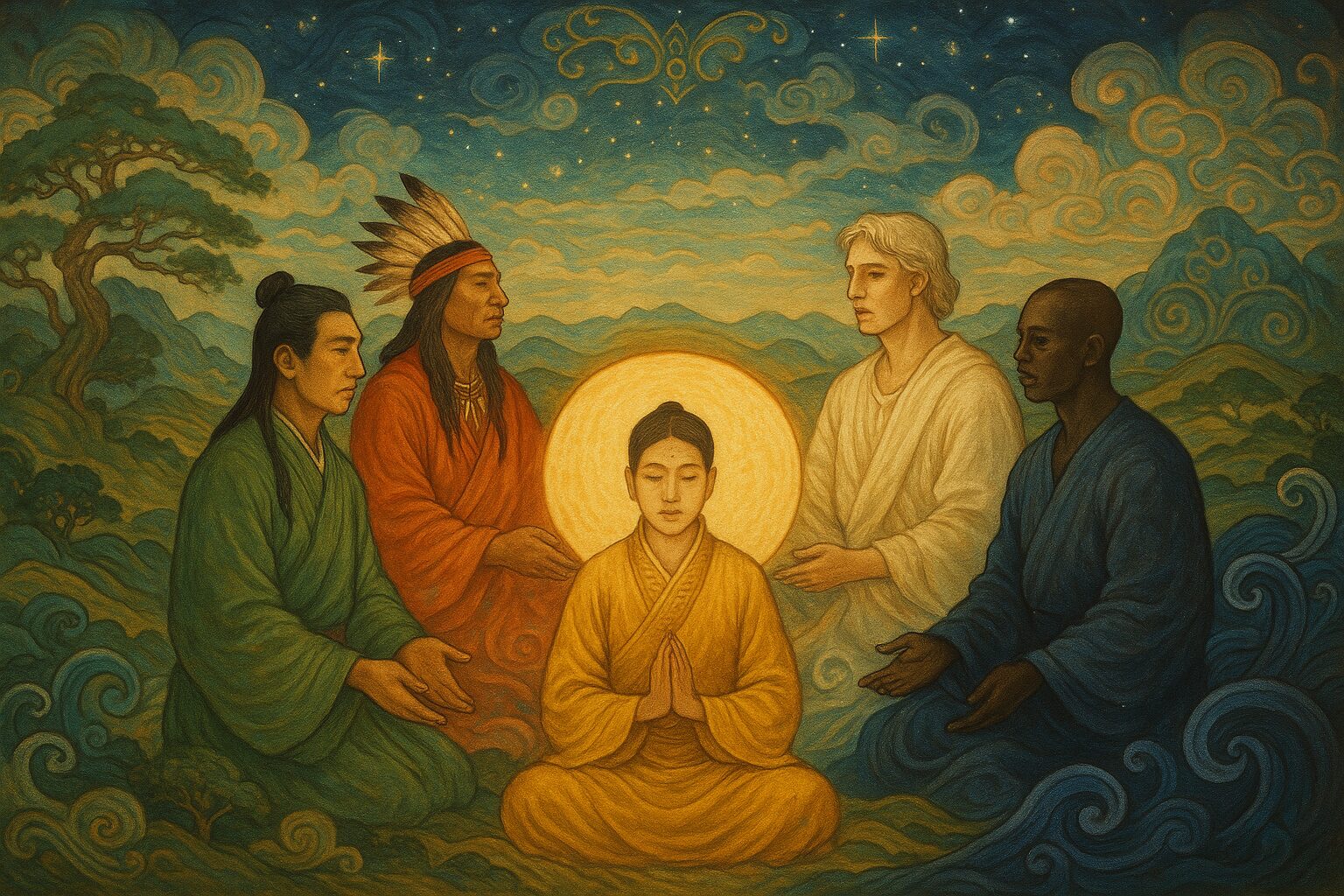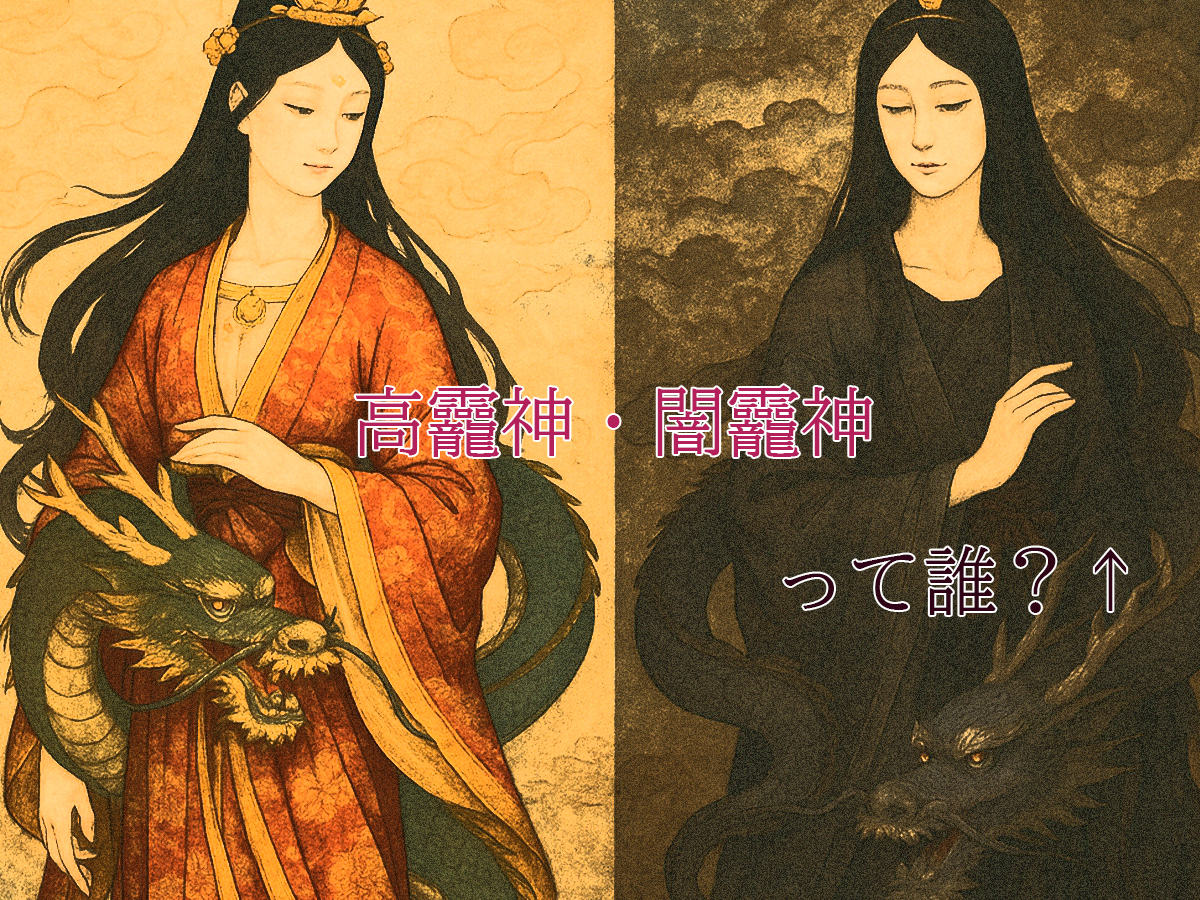- Introduction
- Manchukuo and the History of the Jurchens
- The Manchukuo Flag and Chinese Philosophy of “Five Colors”
- What are the “Goshikijin” Recorded in the Takenouchi Monjo?
- Who Were the Red People and Blue People? Approaching Their True Identity
- The Five-Colored People Who Traveled the World in Heavenly Floating Boats
- The Reason the Five-Colored People Disappeared and “Humanity’s Reset”
- Conclusion: Ancient Memories Pointing to the Future
Introduction
This time, I’d like to delve deeper into the origins of “Manchukuo,” established in the 1930s, and the enigma of the “Goshikijin (Five-Colored People)” recorded in Japan’s ancient text, the Takenouchi Monjo. While these two themes appear to be entirely unrelated on the surface, an unexpected connection emerges when we unravel the myths and ethnic perspectives associated with “colors.”
Super Ancient Truth: Japanese Mythology and the Dragon Race (This link from the original text directs to a blog post about Japanese mythology and the Dragon Race.) Hello. This time, I’d like to talk a little about “the truth hidden behind Japanese mythology.” The myths depicted in the “Kojiki” and “Nihon Shoki” might have had another aspect, different from the surface history we learned in school. The birth of the Japanese archipelago and Izanagi…
Manchukuo and the History of the Jurchens
Manchukuo, which once existed in Northeast China, was a puppet state established by the former Japanese army in 1932.
What is a Puppet State? It’s a term used to describe a government that is nominally independent but in reality governs according to the will of another country, rather than representing the interests and will of its own citizens.
This land was originally inhabited by a people called the Jurchens (女真族). Unlike the Han Chinese, they were a nomadic equestrian people who had established roots in the desolate land of Manchuria.
Jurchen / Nüchen (This link from the original text directs to a historical glossary about the Jurchens.) Window on World History – Appendix: Terms and Hints.
Where is Manchuria?
“Manchukuo,” established by Japan in 1932, was part of Japan’s defense strategy against the Soviet Union and its efforts to secure resources. It was a nation that advocated for ethnic fusion. The five colors of its flag (red, blue, white, black, yellow) represented the “Five Races Accord” ideology from the Qing Dynasty, symbolizing the coexistence of the Manchu, Han, Mongol, Hui, and Korean peoples.
Here, the “five colors” are also related to the Chinese philosophical concept of “Five Directions and Five Colors” (五方五色) and the Five Elements theory (Wood, Fire, Earth, Metal, Water = blue, red, yellow, white, black), with each assigned a direction and attribute. This philosophy is deeply rooted in the East Asian cultural sphere and has influenced Japan.
Manchuria refers to the current three northeastern provinces of China: Liaoning, Jilin, and Heilongjiang. Being close to the border with the Soviet Union, it was also a geopolitically important base. The northeastern part was a desolate area, not very suitable for human habitation, so the dynasties of the time did not seem to govern this land either.
However, as the Soviet Union gradually gained power, the former Japanese army established a puppet regime there in 1932, making it an independent state called “Manchukuo.”
The Manchukuo Flag and Chinese Philosophy of “Five Colors”
The flag of Manchukuo used five colors. This was not merely a design but was based on ancient Chinese Five Elements philosophy and directional beliefs.
- East: Azure Dragon → Blue
- West: White Tiger → White
- South: Vermilion Bird → Red
- North: Black Tortoise → Black
- Center: Yellow Earth → Yellow
This philosophy of five colors represents the ancient Chinese worldview, where the central “yellow” symbolized the centrality of the Han Chinese.
From this, the idea of the “Goshikijin (Five-Colored People)” from the Jomon period seems to have emerged.
What are the “Goshikijin” Recorded in the Takenouchi Monjo?
The Takenouchi Monjo, one of Japan’s ancient historical texts, describes the origin of humanity as the “Goshikijin (Five-Colored People)”:
“Once, the world was inhabited by the Five-Colored People. They were the ‘Yellow People,’ ‘Red People,’ ‘Blue People,’ ‘White People,’ and ‘Black People’.”
| Color | Examples of Main Ethnic Groups |
| Yellow | Japanese, Mongolians, and other Asian peoples |
| Red | Native Americans, ancient Jews, etc. |
| Blue | Polynesians, native Hawaiians, etc. |
| White | Europeans, Australians, etc. |
| Black | Middle Easterners, Africans, etc. |
The idea that the Yellow race is the “center of the Earth” is consistent with Chinese philosophy, which is an interesting coincidence.
Who Were the Red People and Blue People? Approaching Their True Identity
While Yellow, White, and Black correspond to modern racial classifications, “Red People” and “Blue People” do not correspond to actual skin colors. So, what is the true identity of these two races?
Are Red Oni and Blue Oni the Models? One theory suggests that the “Red Oni” and “Blue Oni” appearing in Japanese folklore are the prototypes of the Red and Blue People. These entities might be remnants of ancient indigenous people or different races who once lived in the mountains.
KiYo’s Live Commentary on Ao Oni (Blue Demon). It was hilarious. (This is a placeholder for a YouTube link that was in the original text, but not a functional link in the provided content.)
The Woolpit Mystery and the Possibility of “Different Races” In 12th century England, a mysterious incident is recorded where “children with green skin” were discovered. The children found in this “Woolpit Mystery” are said to have claimed they “came from a land without sun.” This suggests that “there might have been different races or species in this world that we don’t know about.”
The Five-Colored People Who Traveled the World in Heavenly Floating Boats
According to the Takenouchi Monjo, the Five-Colored People were created in Japan and traveled the world in “heavenly floating boats (Ame-no-Ukifune),” becoming the indigenous peoples of various regions. Examples include:
- Ancient Jews
- Sumerians
- Native Americans
- Eskimos
- Ainu people
- Ryukyuan people
Heitate Jingu: The Sacred Place Where the Five-Colored People Gathered
The place where the Five-Colored People gathered before embarking on their world journey is said to be Heitate Jingu (幣立神宮) in Yamato Town, Kumamoto Prefecture. This shrine enshrines the world’s Creator God, “Ōtonochioōkami (大宇宙大和神),” and dedicates Goshiki Shinmen (五色神面), masks modeled after the ancestral gods of the Five-Colored People.
I went to Heitate Shrine’s Goshikijin Festival – [Official] Kaneyoshi Shoyu Brewing Company (This link from the original text directs to a soy sauce company’s blog post about the festival.)
Another Takamagahara Mythology “Goshikijin Civilization” transmitted at Takenouchi Monjo and Heitate Jingu / World’s New Seven Wonders | web Mu News & Research Column for World’s Mysteries and Unexplained Phenomena (This link from the original text directs to a Japanese mystery/occult website.) Shinichiro Namiki, a leading authority on paranormal research, presents “The World’s New Seven Wonders”! This time, from the selection of “Japan’s Super Ancient Civilizations,” we introduce the Goshikijin civilization transmitted at Heitate Jingu.
The only shrine in Japan that enshrines the Gods of the Universe / Heitate Jingu (Kumamoto Prefecture) (This link from the original text directs to a travel blog about Heitate Jingu.) I travel alone to various parts of Japan every month, and in May, I visited Kumamoto for the first time! On that Kumamoto trip, I finally got to visit “Heitate Jingu,” which I had wanted to go to for a long time ⛩ The reason I wanted to go here for so long is because a person from Kumamoto who I know told me that Heitate…
Divine Expressions Carved on the Goshiki Shinmen:
- 驚 (Odoro): Surprise/Awe
- 攻 (Seme): Attack/Offense
- 迷 (Mayoi): Confusion/Hesitation
- 律 (Nori): Law/Rule
- 慢 (Ogori): Arrogance/Pride
Every five years, people from all over the world gather for the “Goshikijin Festival.” It is truly a divine ceremony that transcends race and borders.
The Reason the Five-Colored People Disappeared and “Humanity’s Reset”
Why did the Five-Colored People vanish from history? The answer is also recorded in the Takenouchi Monjo:
The Extinction of Humanity Due to a Great Flood Once, a great catastrophe occurred where the entire Earth was covered by water, and the majority of humanity perished. Although some survived in flying boats, the Five-Colored People’s numbers were greatly reduced. This account resonates with the “Noah’s Ark” story in the Bible.
Conclusion: Ancient Memories Pointing to the Future
As modern people, we tend to dismiss the existence of the Five-Colored People as mere “myth.” However, ancient myths and texts might contain humanity’s lost memories. The journey to trace the roots of races is also a journey to re-examine our own identities. The Five-Colored People could be our ancient ancestors and a hint to illuminate the future.
What color of memory do you carry?



コメント